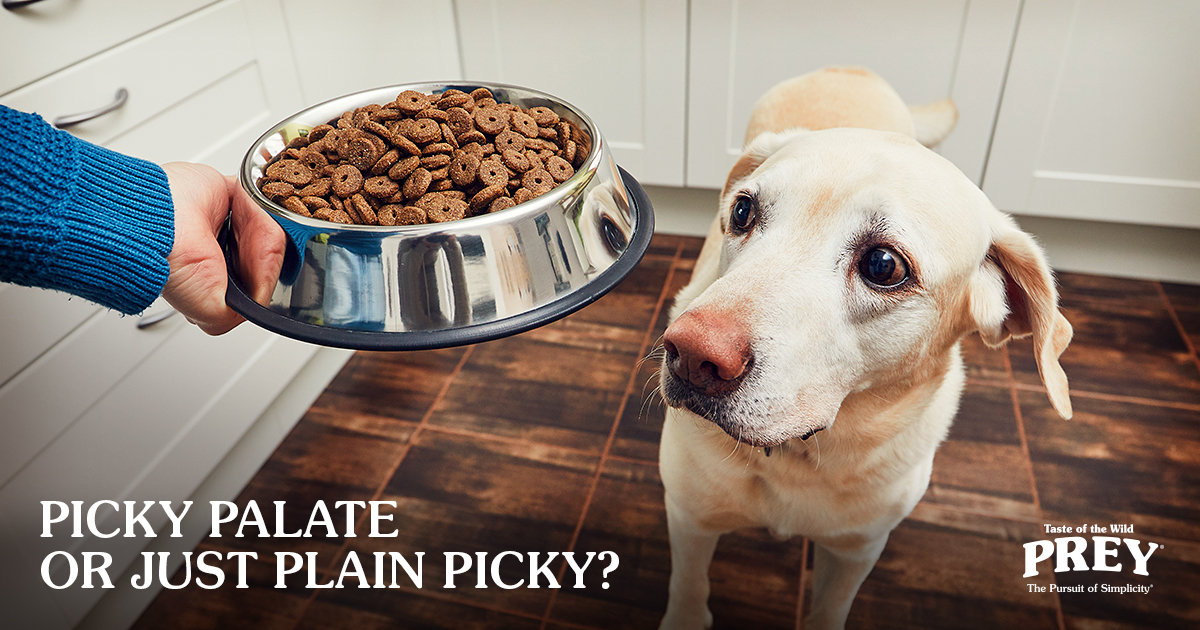 Some pets hoover up every morsel in their food bowls. Others hold a hunger strike until sliced turkey with gravy appears.
Some pets hoover up every morsel in their food bowls. Others hold a hunger strike until sliced turkey with gravy appears.
Just how much does your pet’s sense of taste play into his or her food choices? And how do you know when they’re just being picky or it might be a sign of a health problem?
The Complicated Science of Taste
The flavors you crave may not be those favored by your dog or cat, and vice versa (when was the last time you had a hankering for squirrel or mouse?).
One reason for the discrepancy is that humans have about 9,000 taste buds, geared to sensing sweet, sour, salt, bitter and savory. By comparison, dogs have about 1,700 taste buds and cats make do with a measly 470. While cats have no ability to taste sweet, both dogs and cats can taste water, a nuance that people lack.
Scent also plays a role in taste. As much as 80 percent of what we taste is attributed to smell, according to scientists. (Ever notice how bland everything tastes when you’re stuffed up with a head cold?) Given that the canine nose is up to 100,000 times more powerful than the human schnoz, a dog’s sense of smell no doubt impacts how flavors are perceived. Finally, texture may influence what types of food your pets prefer. Some like crunchy tidbits while others prefer moist canned foods.
Measuring Taste Preferences
Obviously, palatability is a major concern for pet food manufacturers, because even the most nutritious diets aren’t effective if the pet won’t eat them.
To measure taste preferences, scientists often observe dogs and cats to see which foods they sniff first. They may employ sensing instruments known as e-noses and e-tongues that are capable of measuring organic compounds that release lip-smacking aromas. Or they may offer two bowls of food in head-to-head “pet food challenges” to determine which one Sadie prefers.
Feeling Punk or Just Picky?
Despite all this testing, some pets may turn their noses up at the food bowl. If this happens for any length of time, especially if you notice other signs such as weight loss, vomiting or diarrhea, it’s time for a trip to the veterinary clinic.
Loss of appetite can be the first sign of a medical condition such as dental, gastrointestinal, kidney or liver disease, toxin ingestion, anxiety or even a digestive tract obstruction. If your pet simply has an upset stomach, your veterinarian may recommend feeding a bland diet, such as boiled hamburger and rice for a few days.
Cats, especially, should not go without eating for more than a day or two. Any longer and they can develop fatty liver disease, which can further tank the appetite.
Other Possible Causes
If your veterinarian doesn’t find an underlying disease or condition behind your pet’s lack of appetite, there may be other issues at play:
- Bad food — Exposure to heat, daylight and air can make some food go rancid or stale. Check to make sure there aren’t any ants or other insects in the food. To be safe, observe proper food storage measures.
- Treats — Is everyone in the family sneaking Sparky cheese and table scraps? Perhaps your pet is already full. The more you offer bologna and other goodies, the more likely your pet will become a beggar and reject the normal food until you bring out the “good stuff,” compromising your pet’s well-balanced diet.
Leading Them to the Food Bowl
To help entice your pet to eat, you can add water or low-sodium chicken broth to the food to create gravy. Warming the food may also generate an inviting aroma.
However, if you think your dog is holding a food-bowl standoff to manipulate you into bringing out the peanut butter and cheese, a tough-love approach may be in order.
Feed a diet that your dog has eaten in the past; if it remains in the bowl 20 minutes later, remove it and don’t offer food until the next meal. At that time, provide a fresh scoop of the same food. Don’t give in to those big brown eyes. If your dog still refuses the food in a day or two, see your veterinarian.
RELATED POST: Can a Limited Ingredient Diet Still Be Complete and Balanced?
The information in this blog has been developed with our veterinarian and is designed to help educate pet parents. If you have questions or concerns about your pet's health or nutrition, please talk with your veterinarian.
